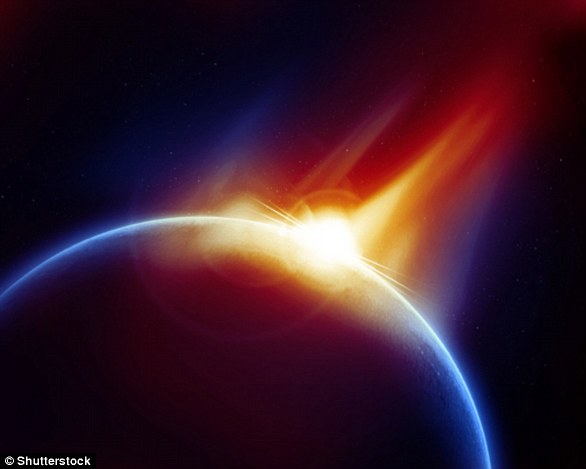Research suggests the asteroid that wiped out the dinosaurs 66 million years ago came from beyond Jupiter. Could another planet-destroying space rock be headed our way soon?
It is common knowledge that the reign of the dinosaurs ended 66 million years ago when a giant asteroid hit Earth.
Until now, the origin of this space rock has been unclear.
Experts from the University of Cologne now claim that the ten-kilometre-wide asteroid traveled millions of kilometres from Jupiter before colliding with our planet.
“The fate of the dinosaurs and many other species was sealed by this projectile from the farthest reaches of the solar system,” said Professor Dr. Carsten Münker.
This discovery inevitably raises the question of whether another devastating asteroid is heading our way.
It is known that the reign of the dinosaurs ended when a giant asteroid hit Earth 66 million years ago. But until now, the origin of this space rock has remained unclear (artist’s impression_
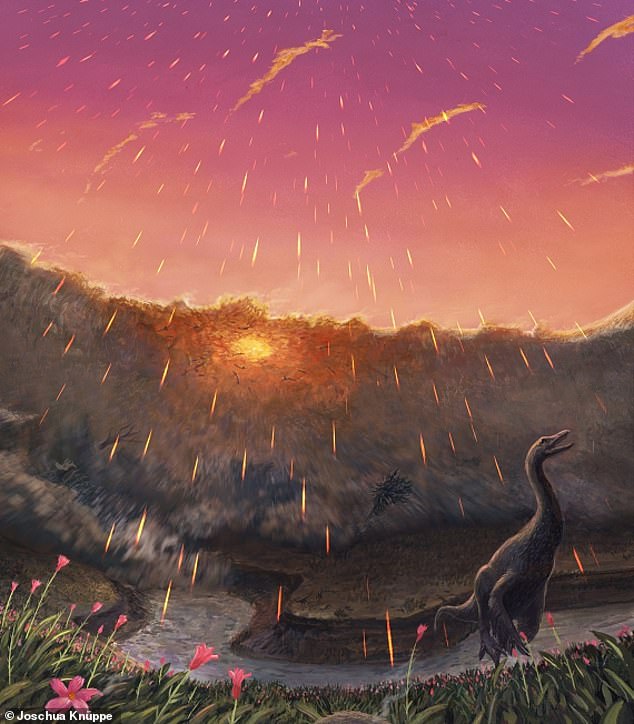
Artistic reconstruction of the historic event known as Chicxulub, featuring deadly impact spheres that fell from the sky 66 million years ago
Dr. Mario Fischer-Gödde and his colleagues say the deadly rock was a massive carbonaceous chondrite (type C) asteroid, a carbon-rich type that is common in the solar system but rarely hits Earth.
C-type asteroids formed beyond Jupiter about 4.6 billion years ago, when the solar system was forming.
Dr Fischer-Gödde told MailOnline: ‘C-type asteroids are leftover building blocks of the gas and ice planets in the outer regions of the solar system.
‘Due to the dynamical evolution of the solar system, and the early migration of Jupiter, the orbits of asteroids became perturbed and were dispersed into the inner solar system, where they are now located: in the asteroid belt.’
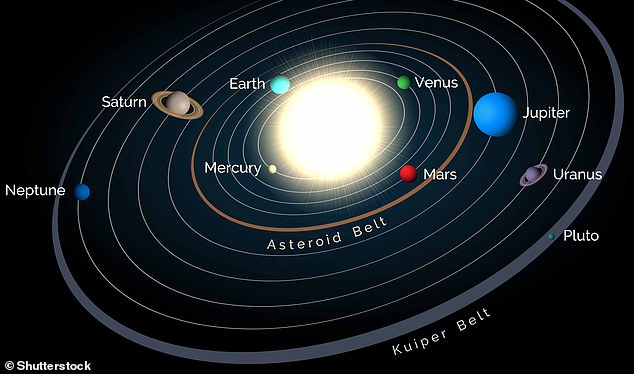
The first four planets (Mercury, Venus, Earth and Mars) make up the inner solar system, while the last four (Jupiter, Saturn, Neptune and Uranus) make up the outer solar system. The gap between the inner and outer solar systems was larger than it is now, experts report. Planet Nine is a hypothetical planet that may have existed, other studies say
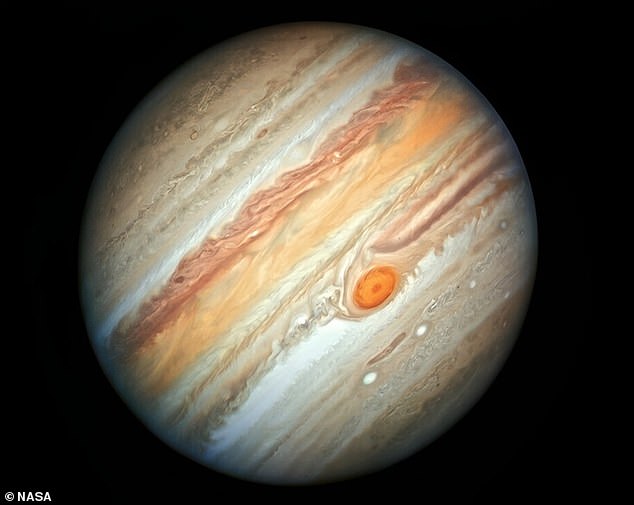
Jupiter is the fifth planet from the Sun and the largest in the solar system – more than twice as massive as the other planets combined
It has long been known that the dinosaurs were wiped out by the Chicxulub impact, an asteroid that struck a shallow sea in what is now the Yucatán Peninsula in Mexico 66 million years ago.
For those animals not killed directly by the impact, the collision released a huge cloud of dust and soot that partially blocked the sun and caused temperatures to drop.
As a result, 75 percent of all animal and plant species were wiped out.
All non-avian dinosaurs, pterosaurs, ammonites, and most marine reptiles disappeared, while birds, crocodiles, and turtles survived, as well as a few mammals, from which humans evolved.
Today, the event is marked by a thin layer of sediment, the K-Pg boundary, which occurs in marine and terrestrial rocks worldwide.
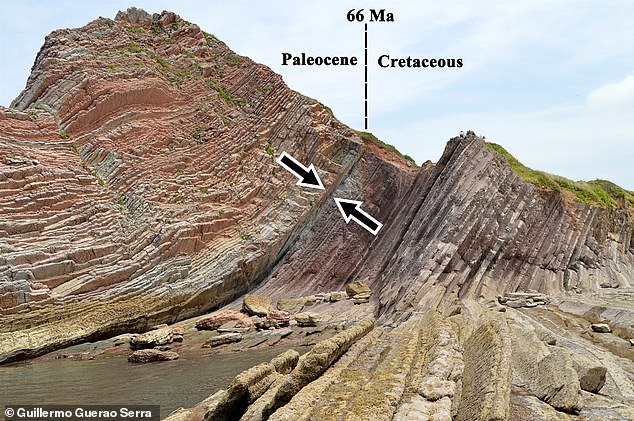
Today, the event is marked by a thin layer of sediment, the so-called K-Pg boundary, found in marine and terrestrial rocks worldwide and dating back 66 million years (shown here in Zumaia, Spain)
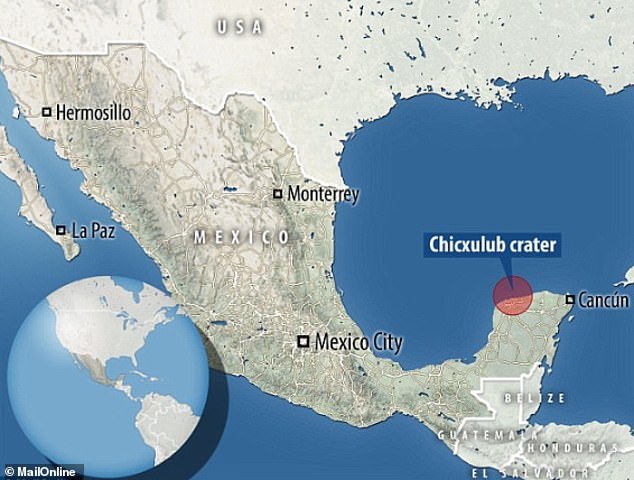
The Chicxulub asteroid struck a shallow sea in what is now the Gulf of Mexico about 66 million years ago
The rocky boundary dates back 66 million years and contains unusually high concentrations of “platinum group metals” such as iridium and ruthenium, which are rare on Earth but common in asteroids.
From this, scientists concluded that the Earth had been hit by a huge rocky object that covered the Earth with debris. However, the origin of the object is still not well understood.
To learn more, the German team analyzed rock samples taken at the K-Pg boundary, looking specifically for traces of ruthenium.
For comparison, they also analyzed samples of other rocks, including samples from other asteroid impacts and two carbonaceous chondrites.
The results showed that the ruthenium traces in the K-Pg boundary rocks and the carbonaceous chondrites were the same.
This shows that the Chicxulub impact likely came from a C-type asteroid that formed in the outer solar system.
They also rule out that a comet caused the impact, as other theories have suggested.
Simply put, comets are made of ice and rock, while asteroids are made of rock and metal.
While C-type asteroids are found in the outer solar system, S-type asteroids are much more common in the inner solar system.
S-type (rocky) asteroids are composed of silicate materials and nickel-iron and are the most common visitors to Earth of all asteroids.
According to the researchers, Earth has been hit almost exclusively by fragments of S-type asteroids over the past 500 million years.
More than 80 percent of all asteroid fragments that fall to Earth as meteorites come from the inner solar system.
Professor Dr Carsten Münker, co-author of the study, added: ‘We have discovered that the impact of an asteroid like the one at Chicxulub is a very rare and unique event in geological time.’
The new study is published in the journal Science.

